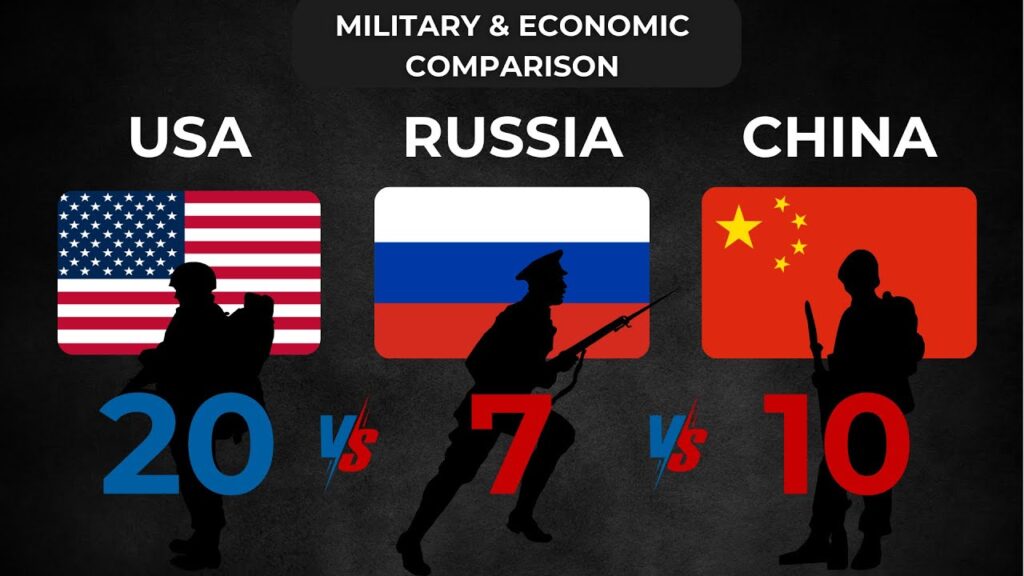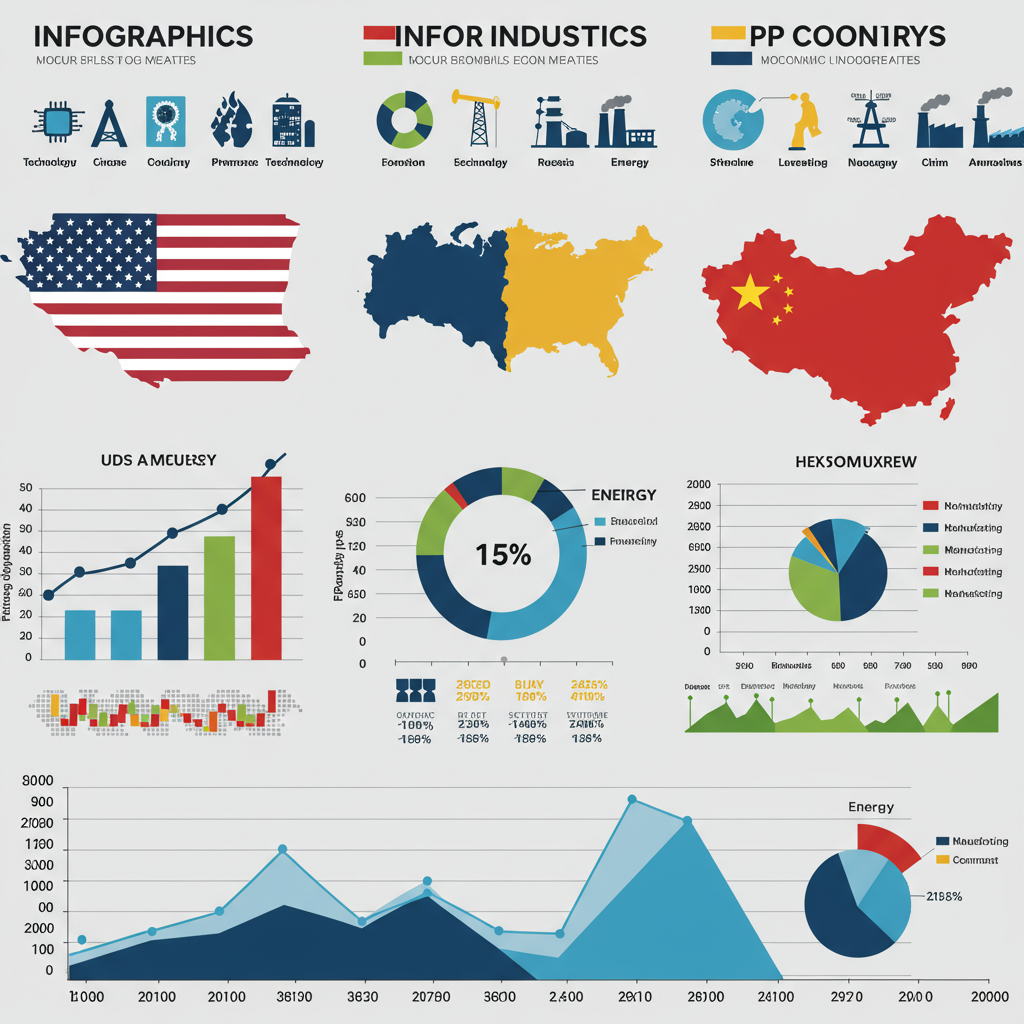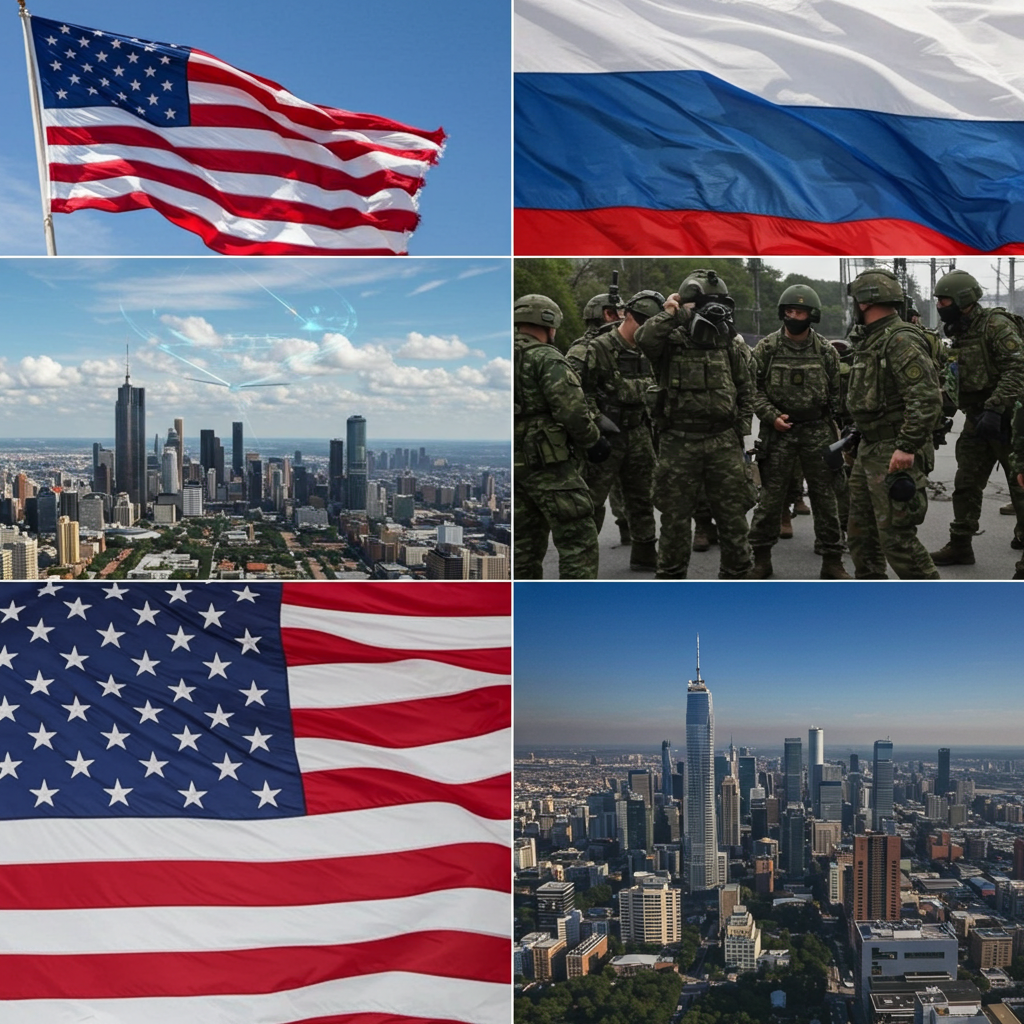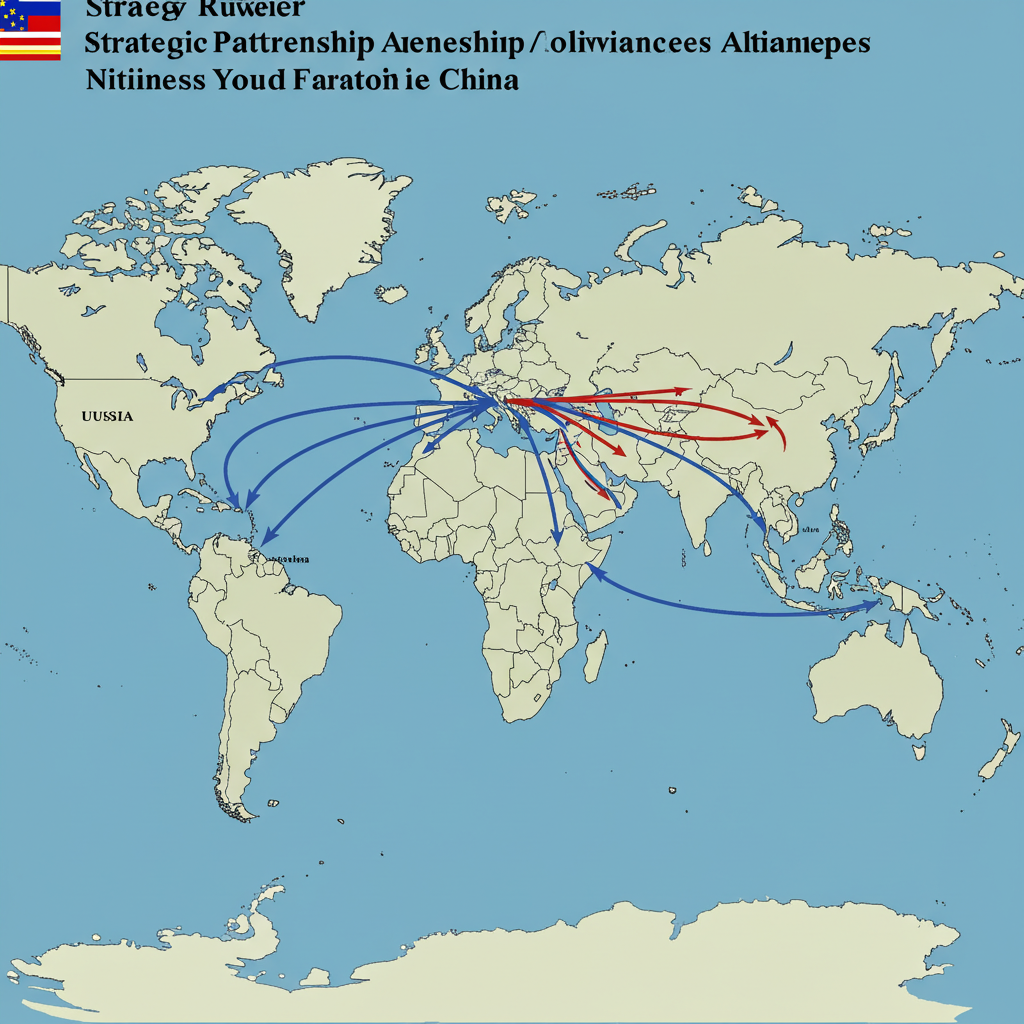Explore a comprehensive comparison of the USA, Russia, and China in 2025. Discover key insights on economy, politics, and global influence in this detailed analysis.
As we step into 2025, the geopolitical landscape of the world is more complex than ever. The United States, Russia, and China stand as three of the most powerful nations, each with distinct characteristics, strengths, and challenges. This blog post aims to provide a comprehensive comparison of these three countries across various dimensions, including economy, military, technology, culture, and global influence.

Economic Landscape
United States
The United States remains the world’s largest economy, driven by a diverse range of industries including technology, finance, healthcare, and entertainment. In 2025, the U.S. economy is projected to continue its recovery from the COVID-19 pandemic, with a GDP growth rate of approximately 2.5%. Key factors contributing to this growth include advancements in technology, a robust labor market, and increased consumer spending. The U.S. dollar remains the world’s primary reserve currency, further solidifying America’s economic dominance.
However, the U.S. also faces significant challenges, including rising inflation, income inequality, and a national debt exceeding $31 trillion. The political landscape remains polarized, complicating efforts to implement cohesive economic policies. Additionally, trade tensions with China continue to affect various sectors, particularly manufacturing and agriculture.
Russia
Russia’s economy in 2025 is characterized by its reliance on natural resources, particularly oil and gas. While the country has made strides in diversifying its economy, it still faces significant challenges due to international sanctions and a lack of foreign investment. The GDP growth rate is projected to be around 1.5%, hindered by a shrinking workforce and low productivity levels.
Despite these challenges, Russia remains a key player in the global energy market, supplying a significant portion of Europe’s energy needs. The government has invested heavily in infrastructure projects, particularly in the Arctic region, to enhance its energy export capabilities. However, corruption and bureaucratic inefficiencies continue to plague the business environment, limiting economic growth.
China
China’s economy is expected to grow at a rate of approximately 5.5% in 2025, driven by its manufacturing sector, technological advancements, and expanding consumer market. As the second-largest economy in the world, China has made significant investments in infrastructure and technology, positioning itself as a global leader in sectors such as renewable energy, artificial intelligence, and telecommunications.
However, China faces its own set of challenges, including an aging population, environmental concerns, and increasing debt levels. The government’s strict control over the economy and society has led to tensions both domestically and internationally. Additionally, trade relationships, particularly with the U.S., remain strained, impacting economic forecasts.

Military Power
United States
The United States maintains the most advanced military in the world, with a defense budget exceeding $800 billion in 2025. The U.S. military is characterized by its technological superiority, including advanced aircraft, naval capabilities, and cyber warfare strategies. The country continues to invest heavily in research and development, ensuring that its military remains at the forefront of innovation.
In terms of global reach, the U.S. has military bases around the world, allowing for rapid deployment and response to international crises. The country remains a key member of NATO and continues to strengthen alliances with countries in the Indo-Pacific region, particularly in response to China’s growing influence.
Russia
Russia’s military, while smaller in budget compared to the U.S., is still formidable. With a defense budget of approximately $70 billion, Russia focuses on modernizing its armed forces and enhancing its nuclear capabilities. The country has invested in advanced missile systems, cyber warfare, and electronic warfare technologies.
Russia’s military strategy emphasizes regional dominance, particularly in Eastern Europe and the Arctic. The ongoing conflict in Ukraine has highlighted Russia’s willingness to use military force to achieve its geopolitical objectives. However, the military faces challenges related to logistics, training, and personnel shortages.
China
China’s military, officially known as the People’s Liberation Army (PLA), has undergone significant modernization in recent years, with a defense budget of around $250 billion in 2025. The PLA is focusing on expanding its naval capabilities, developing advanced missile systems, and enhancing cyber warfare capabilities.
China’s military strategy is centered on asserting its influence in the Asia-Pacific region, particularly in the South China Sea. The country has been increasingly aggressive in its territorial claims, leading to tensions with neighboring countries and the United States. China’s military expansion raises concerns about regional stability and the potential for conflict.

Technological Advancements
United States
The United States continues to lead the world in technological innovation, particularly in areas such as artificial intelligence, biotechnology, and space exploration. Silicon Valley remains a hub for startups and established tech companies, driving advancements that impact various sectors of the economy.
In 2025, the U.S. government is investing heavily in research and development to maintain its competitive edge. Initiatives to promote STEM education and attract talent from around the world are critical to sustaining innovation. However, concerns about data privacy, cybersecurity, and the ethical implications of emerging technologies pose significant challenges.
Russia
Russia has made strides in certain technological sectors, particularly in cybersecurity and military technology. The government has prioritized the development of domestic technologies to reduce reliance on foreign imports. However, the country lags behind the U.S. and China in areas such as consumer technology and innovation.
In 2025, Russia is focusing on enhancing its digital economy and promoting tech startups, but challenges related to infrastructure and investment remain. The government’s control over the internet and technology sectors raises concerns about censorship and the free flow of information.
China
China is rapidly emerging as a global leader in technology, particularly in areas such as artificial intelligence, 5G telecommunications, and e-commerce. The Chinese government has implemented policies to foster innovation and attract foreign investment, leading to the rise of tech giants like Alibaba and Tencent.
In 2025, China aims to become self-sufficient in critical technologies, reducing reliance on foreign companies. However, issues related to intellectual property theft, data privacy, and government control over technology pose challenges to its global standing. The competition between the U.S. and China in technology is intensifying, impacting global supply chains and innovation.

Cultural Influence
United States
Culturally, the United States exerts significant influence globally through its entertainment industry, including Hollywood films, television shows, and music. American culture is characterized by its diversity, innovation, and emphasis on individualism. In 2025, the U.S. continues to be a melting pot of cultures, attracting talent and creativity from around the world.
However, the U.S. also faces challenges related to social issues, including racial inequality, political polarization, and debates over freedom of speech. The cultural landscape is evolving, with increasing awareness of social justice issues and movements advocating for change.
Russia
Russian culture is rich and diverse, with a deep history in literature, music, and the arts. In 2025, Russia continues to promote its cultural heritage, emphasizing classical literature, ballet, and traditional music. However, the government’s control over cultural expression and media limits the diversity of voices and perspectives.
The ongoing conflict in Ukraine has also impacted Russia’s cultural standing on the global stage, leading to boycotts and isolation from Western cultural institutions. Despite these challenges, Russian culture remains resilient, with artists and intellectuals finding ways to express their creativity.
China
China’s cultural influence is growing, particularly through its film industry, literature, and art. The government actively promotes Chinese culture abroad, seeking to enhance its soft power. In 2025, Chinese films and television shows are gaining popularity, reflecting the country’s unique narrative and values.
However, the Chinese government’s tight control over cultural expression and censorship poses challenges to artistic freedom. The ongoing tension between tradition and modernity continues to shape China’s cultural landscape, as the country navigates its identity in the global arena.
Global Influence and Diplomacy
United States
The United States continues to play a dominant role in global affairs, promoting democracy, human rights, and free markets. In 2025, the U.S. is focused on rebuilding alliances and partnerships, particularly in response to challenges posed by China and Russia. The Biden administration emphasizes multilateralism, engaging with international organizations and global coalitions to address pressing issues such as climate change, health security, and economic stability.
However, America’s global influence is challenged by rising nationalism and skepticism towards international institutions. The U.S. must navigate complex relationships with allies and adversaries alike, balancing its interests with the need for cooperation.
Russia
Russia’s global influence is primarily driven by its military capabilities and energy resources. In 2025, the country seeks to assert its presence in international affairs, particularly in Eastern Europe and the Middle East. The government emphasizes its role as a counterbalance to U.S. influence, forming strategic partnerships with countries like Iran and Venezuela.
However, Russia faces significant challenges in terms of economic sanctions and diplomatic isolation. The ongoing conflict in Ukraine continues to strain relationships with Western countries, limiting Russia’s ability to project power on the global stage.
China
China’s global influence is on the rise, driven by its economic power and strategic initiatives such as the Belt and Road Initiative (BRI). In 2025, China seeks to expand its influence in Asia, Africa, and beyond, promoting infrastructure development and trade partnerships.
However, China’s assertive foreign policy and human rights record raise concerns among many countries. The U.S. and its allies are increasingly wary of China’s growing influence, leading to heightened tensions in the Indo-Pacific region. China must navigate these challenges while maintaining its economic growth and global standing.
Conclusion
As we compare the United States, Russia, and China in 2025, it is clear that each country possesses unique strengths and faces distinct challenges. The U.S. remains a global leader in technology and culture but grapples with internal divisions and economic issues. Russia seeks to assert its influence through military power and energy resources, yet faces economic sanctions and diplomatic isolation. China is rapidly emerging as a global powerhouse, driven by economic growth and technological advancements, but must contend with rising tensions and internal challenges.
The interplay between these three nations will shape the future of global politics, economics, and culture. As they navigate their respective paths, the world watches closely, aware that the decisions made today will have lasting implications for generations to come.

